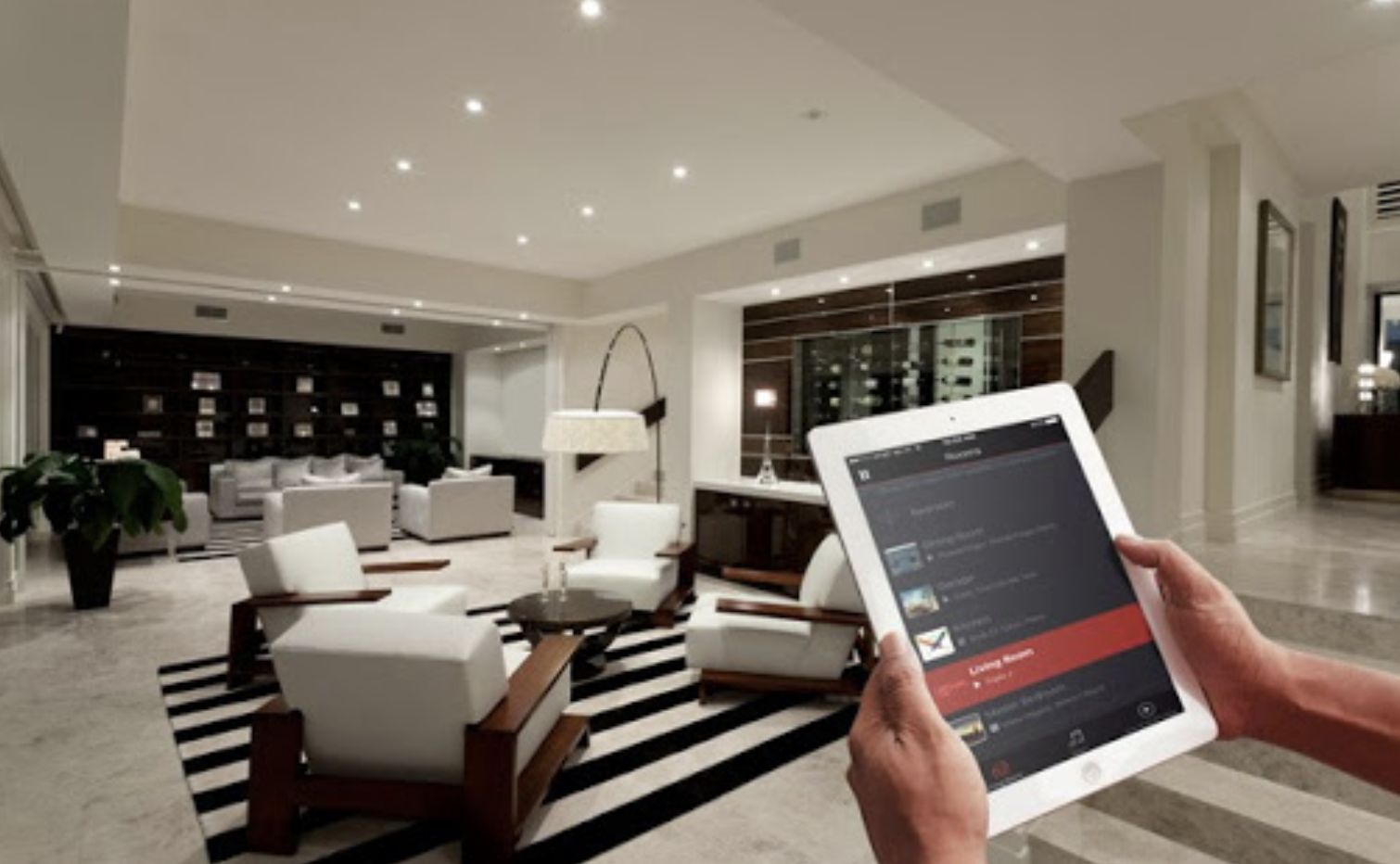You’re strolling down the grocery aisle alone, and the peaceful serenade of Christmas songs seems like a distant dream. Somehow, it’s soft and clear at the same time. And you wonder, how is the audio system accomplishing this incredible feat? The answer is distributed audio, and it’s not only meant for businesses.
Distributed audio can also be referred to as “70-volt systems” or “constant power systems.” You may mistakenly believe that distributed audio is no different than a bunch of speakers hooked up to a PA. However, what differentiates distributed audio systems from PA systems is that distributed audio systems’ transformers connect directly to the speakers. This allows them to utilize special amplifiers to give power to separate speakers at once.
Distributed audio speakers’ onboard electronics distribute the power from the amplifier evenly to all of the speakers. Because of this, distributed audio speakers can chain together in parallel. This parallel chaining gives you the ability to distribute the audio in different ways throughout your home. For example, say you want to play the Beatles in one room, and your teenage son wants to play Lil Uzi Vert in another. Distributed audio lets you play your music in the kitchen while your son plays his in his room.
Examples of Distributed Audio
Contents [show]
There are three primary types of distributed audio: single source-single zone, single source-multiple zone, and multiple source-multiple zones.
Single Source-Single Zone
One device controls single source-single zone audio systems. This configuration means speakers have single volume control and audio output.
Single Source-Multiple Zone
SIngle source-multiple zone distributed audio systems allow people to control the volume or selection from one area to the next. Because these devices only use a single source, only one device can control variables such as the volume or song selection.
Multiple Source-Multiple Zone
Multiple source-multiple zones distributed audio systems allow the user to control different areas from various devices. Say that you want to play Spotify in the dining room on your cell phone, but you want to stream Netflix in your living room from your computer. A multiple source-multiple zone distributed audio system will help you accomplish this.
How Many Rooms (Zones) Do You Have In your System?
When you’re thinking about distributed audio system building, the first thing to consider is how many rooms or zones you have in the system. How many zones you need in your system determines most of your equipment needs. It can also reveal your complete installation needs, such as whether you need to go wireless or whether you need to employ intricate installation tactics.
Gauging your rooms’ size and the budget you have for each will also go a long way in determining your optimal setup. Choosing your AV receiver will also affect your configuration. For example, some AV receivers have multi-zone features that support extra speakers. If your source doesn’t have the required amount of speaker connections, you can also consider a speaker-selector switch. The speaker-selector control gives you the option to toggle between zone A and Zone B speakers.
The essential aspect of choosing your rooms is that it helps you finalize a budget. Finalizing your budget prepares you for the rest of your distributed audio installation journey.
How Many Sources Do You Need For Your System?
After deciding on how many rooms need distributed audio, the next step is to determine how many sources you need. If you want to listen to the same source in all of your rooms, you don’t need to consider how many sources you need. But if you want the freedom to listen to multiple audio sources, you need to budget and consider how many additional sources you need.
Receivers commonly have multiple source features, but you need to be careful not to choose a receiver with one-source limitations. When deciding how many sources you need, it’s wise to create a list for all possible services such as cable or streaming services. This list should include:
- Cable
- Music streaming services
- Video streaming services
- Blu-Ray
- AM/FM tuners
- Satellite radio
- CD player
- Record player
The more sources you require, the more complex the design and the more expensive your system will wind up.
Wired or Wireless Systems?
Wireless is the wave of the future, but if you have a more straightforward setup, you may not need wireless configurations. The apparent benefit to wireless technology is that you have flexibility in speaker configuration and source control. If you decide you don’t like your speaker arrangement, you can rearrange it without worrying about hiding wires.
Your overall home audio layout determines the type of wireless technology you need. If you aren’t worried about relocating your speakers, wireless technology might not be necessary, and you might be able to save your budget.
The other benefit of wireless technology is wireless control. Universal remotes allow you to control multiple sources and zones from one location.
DIY or Distributed Audio Contractor?
Choosing whether you can install your distributed audio system on your own comes down to the complexity of your design. If you have a simple setup, you can most likely get away with devoting a weekend to your installation. However, if you have multiple zones, multiple sources, and you want to preserve the integrity of your home’s aesthetic, contracting an audio video dealer will prevent any stress you have about the job.
Conclusion-Plan Before You Try to Implement Distributed Audio In Your Home
Distributed audio is ideal for anyone looking to upgrade their sound system. Whether you have one or multiple sources and zones, distributed audio has many benefits worth considering. But before installing a system in your home, it’s crucial to take stock of how many zones you have in your home, how many different audio sources you need, and the type of installation your home requires.


